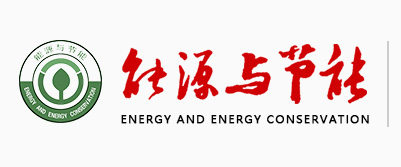202401
冬奥会复杂山地建筑能耗及碳排放研究
樊兆卫1,冉国强1,王燕婷2
(1. 中交一公局集团华中工程有限公司,湖北 武汉 430000;2. 北京科技大学土木与资源工程学院,北京 100083)
摘要:冬奥会延庆赛区山顶出发区、竞速结束区及冬奥村建筑均为永久建筑,在冬奥会结束后仍将保留利用。
考虑到该类山地建筑所处极端寒冷气候,为保障建筑功能,需要明确未来能源需求及碳排放量,以便确定能源利
用方案。以3 类永久建筑为例,基于2019—2021 年延庆区实际气象数据,利用能耗模拟软件,分析了其全年能
耗水平及碳排放量。结果显示,2019—2021 年冬奥村全年总能耗为1.3 ×106 ~ 1.4 ×106 kW·h,集散广场全年总能
耗为4.2 × 105 ~ 4.8 × 105 kW·h,而山顶雪飞燕全年总能耗为2.8 × 105 ~ 2.9 × 105 kW·h。冬奥村总能耗显著高于其
他两类建筑,且整体能耗较大。2019—2021 年冬奥村年度总碳排放量为7.9 × 105 ~ 8.5 ×105 kg CO2,集散广场年
度总碳排放量为2.5 × 105 ~2.9 × 105 kg CO2,而雪飞燕年度总碳排放量为1.7 × 105 ~ 1.8 × 105 kg CO2。基于上述结
果,建议冬奥村优先使用太阳能光伏、地源热泵等低碳清洁能源供能,降低整体碳排放水平。
关键词:能耗;碳排放量;严寒气候;海拔;山地建筑
中图分类号:TU2 文献标志码:A 文章编号:2095-0802-(2024)01-0063-06
Energy Consumption and Carbon Emission of Complex Mountain Buildings
in Olympic Winter Games
FAN Zhaowei1, RAN Guoqiang1, WANG Yanting2
(1. Central China Engineering Co., Ltd., CCCC First Highway Engineering Group, Wuhan 430000, Hubei,
China; 2. School of Civil and Resource Engineering, University of Science and Technology Beijing,
Beijing 100083, China)
Abstract: The buildings at the starting area and finishing area of the Yanqing competition area and the Winter Olympics
Village are permanent buildings that will continue to be used after the Olympic Winter Games. Considering the extreme
cold climate in which these mountainous buildings are located, it is necessary to clarify their future energy demand and
carbon emissions in order to determine energy utilization schemes to ensure the functionality of the buildings. This study
took three types of typical permanent buildings as examples, and used energy consumption simulation software based on
actual meteorological data from Yanqing district between 2019 and 2021 to analyze their annual energy consumption
levels and carbon emissions. The results show that the total annual energy consumption of the Winter Olympic Village was
1.3 ×106 - 1.4 ×106 kW·h, the total annual energy consumption of the Gathering Square was 4.2 × 105 - 4.8 × 105 kW·h,
and the total annual energy consumption of the Snow Swallow on the mountaintop was 2.8 × 105 - 2.9 × 105kW·h in
2019—2021. The total energy consumption of the Winter Olympic Village was significantly higher than that of the other
two types of buildings, and the overall energy consumption was very large. The annual carbon emissions of the Winter
Olympic Village from 2019 to 2021 were 7.9 × 105 - 8.5 ×105 kg CO2, the annual total carbon emissions of the Gathering
Square were 2.5 × 105 - 2.9 × 105 kg CO2, and the annual total carbon emissions of the Snow Swallow were 1.7 × 105 -
1.8 × 105 kg CO2. Based on the above results of total building energy consumption and total carbon emissions, it is
recommended that the Winter Olympic Village preferentially use low-carbon clean energy such as solar photovoltaic and
geothermal heat pumps for energy supply to reduce the overall carbon emission level.
Key words: energy consumption; carbon emissions; extreme cold climates; altitude; mountain buildings


